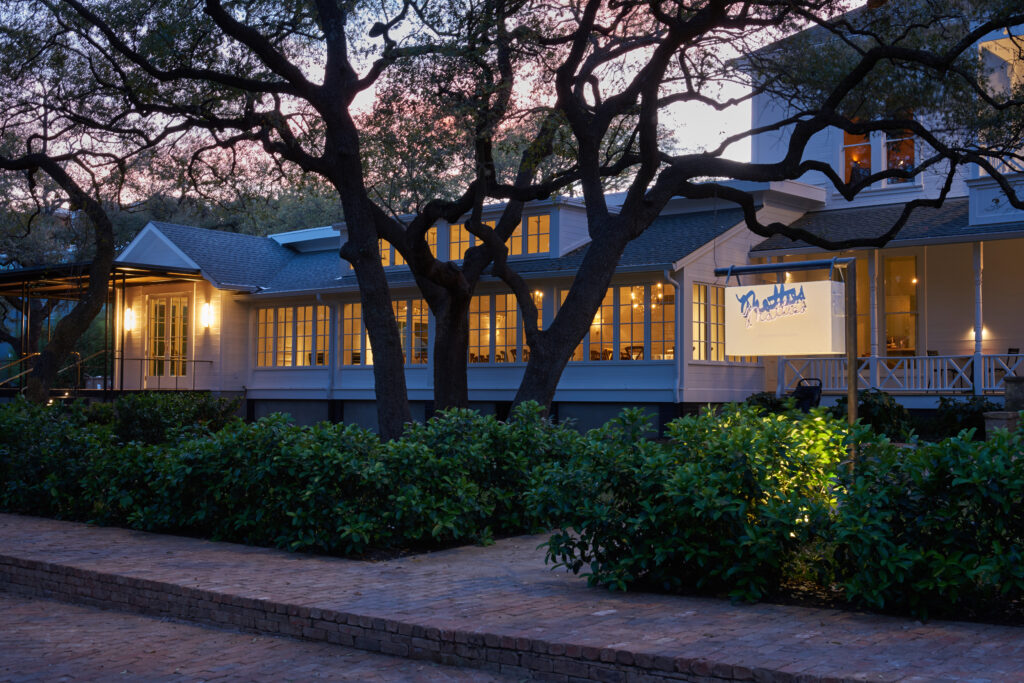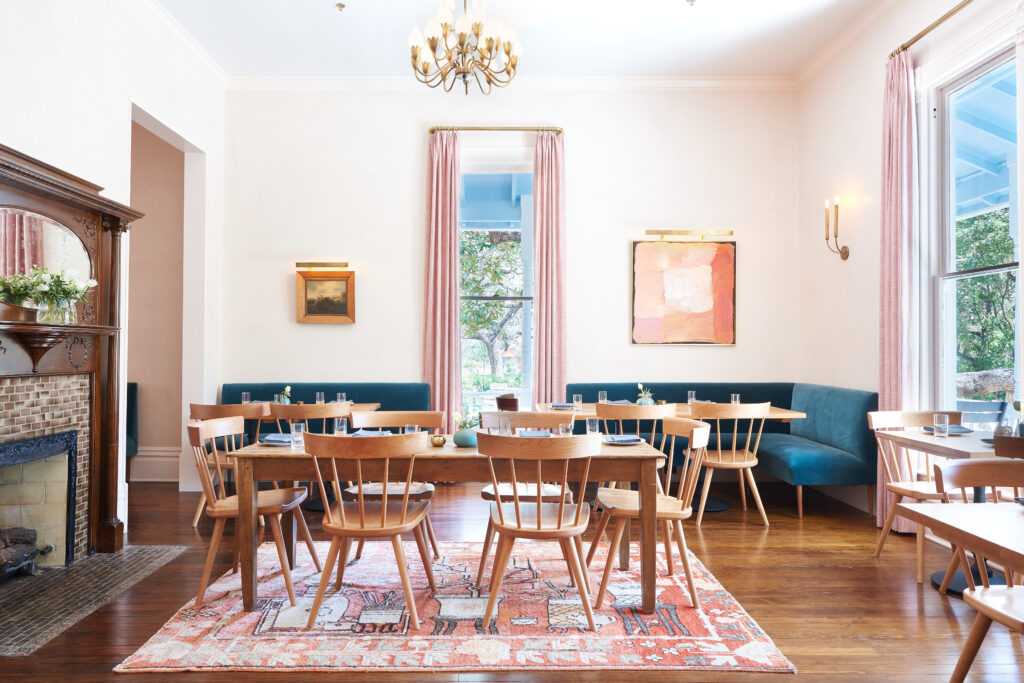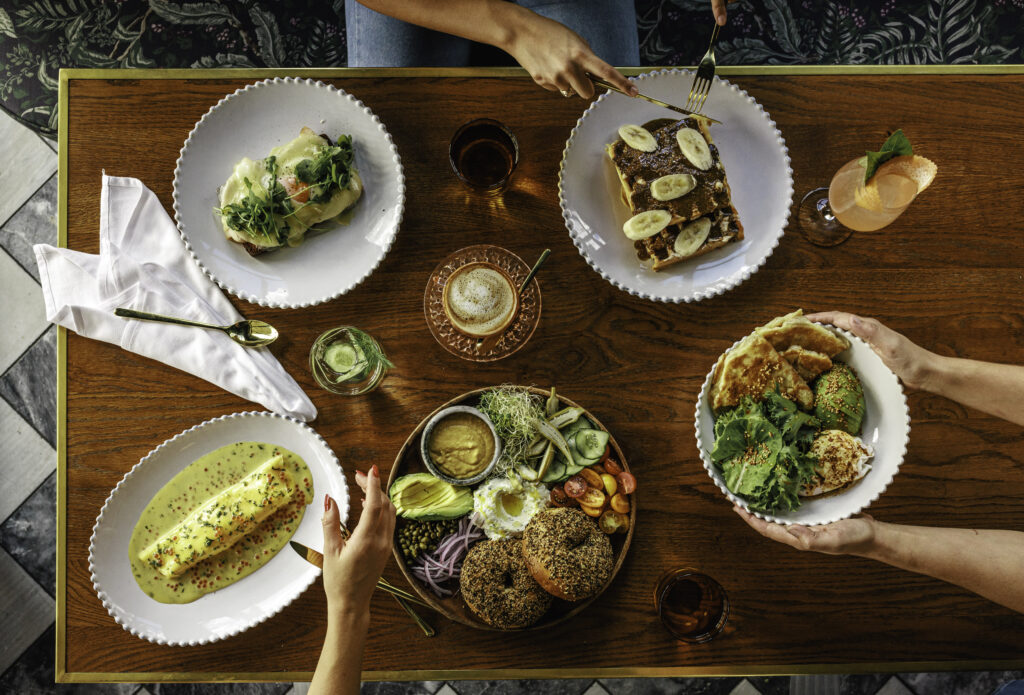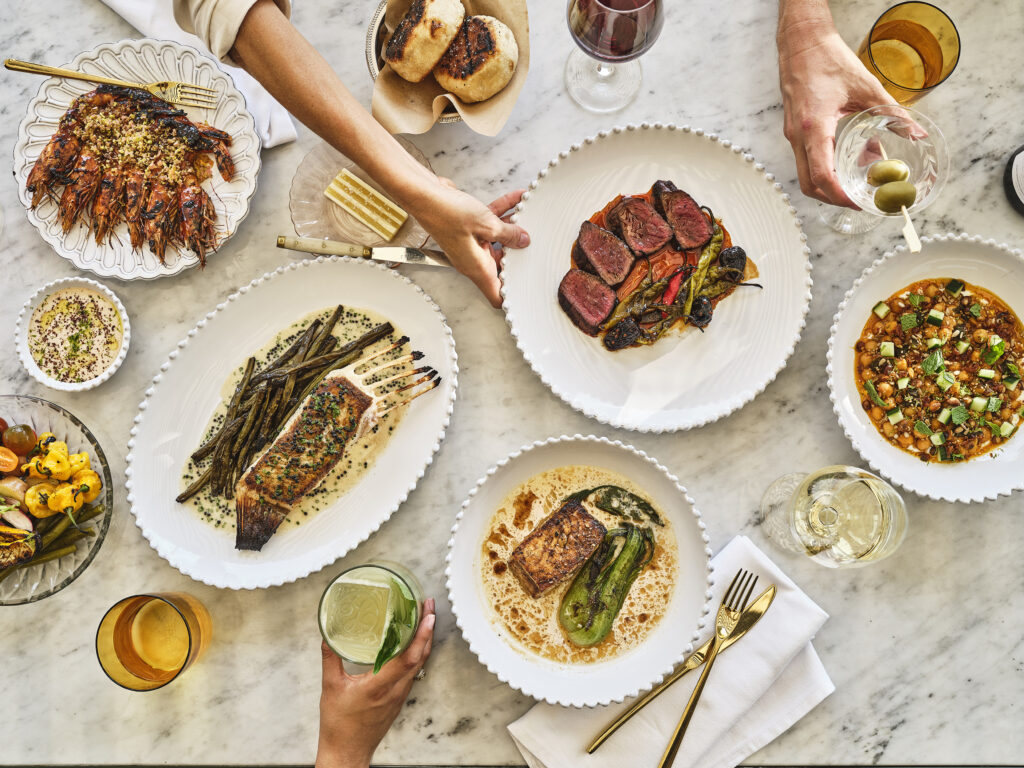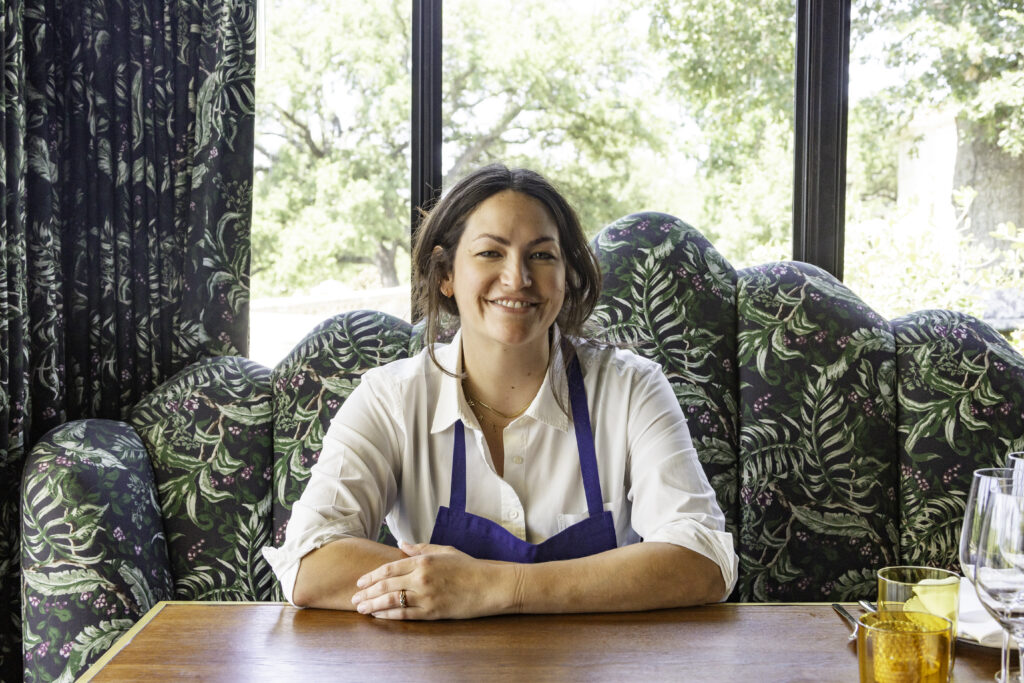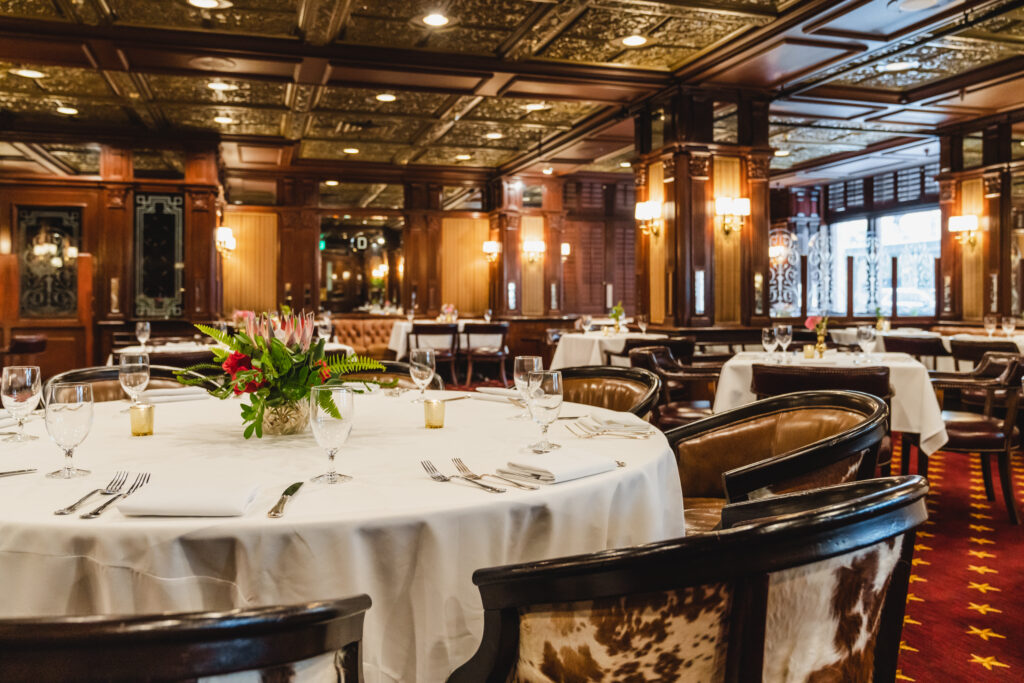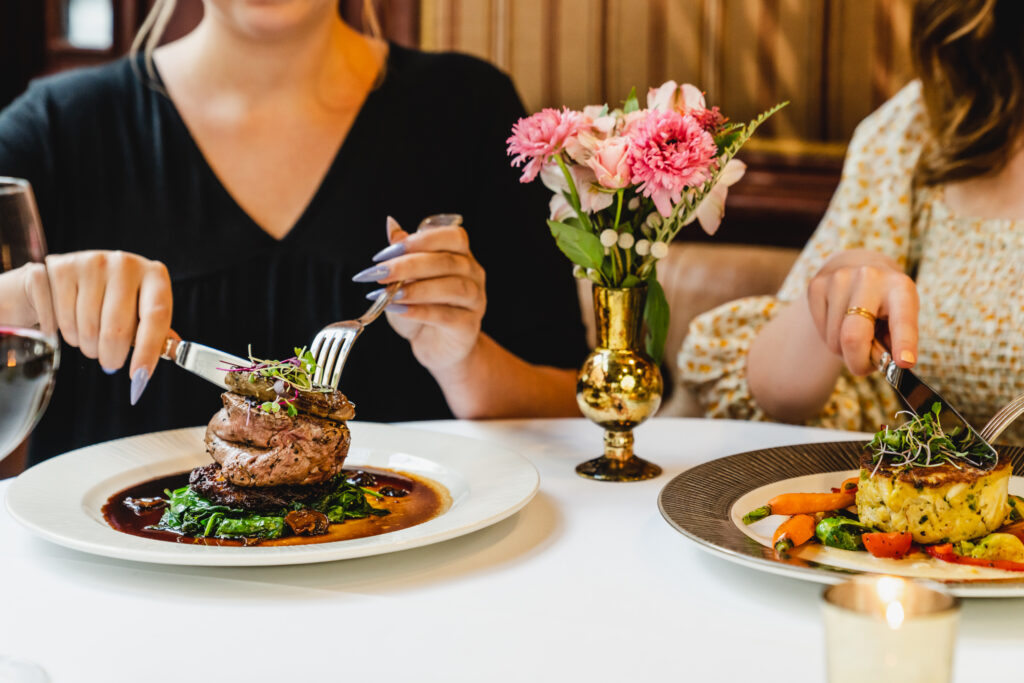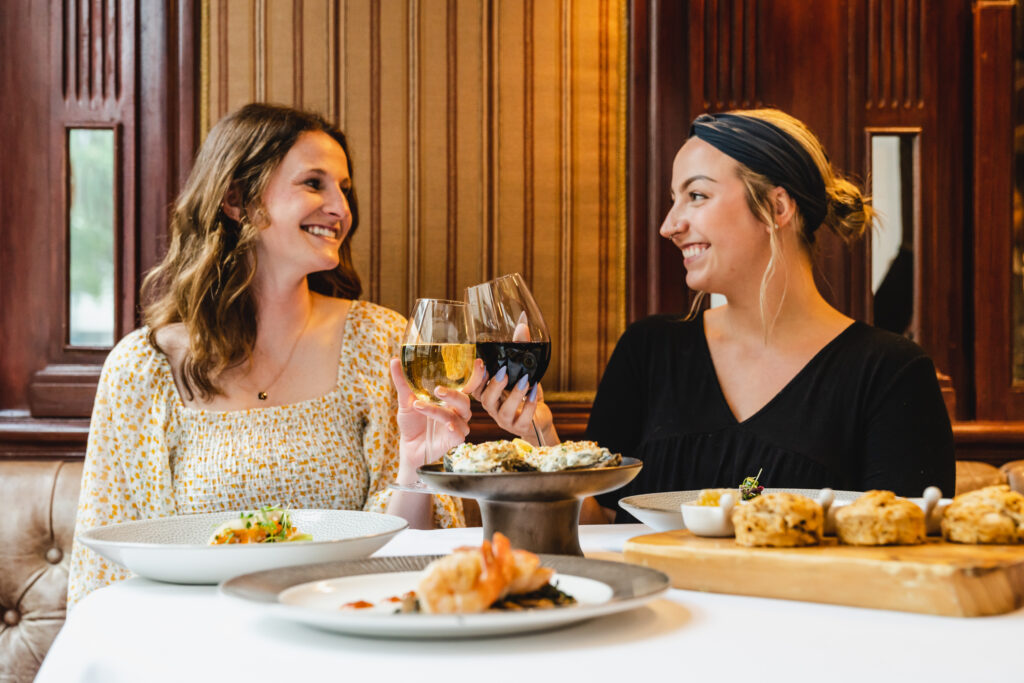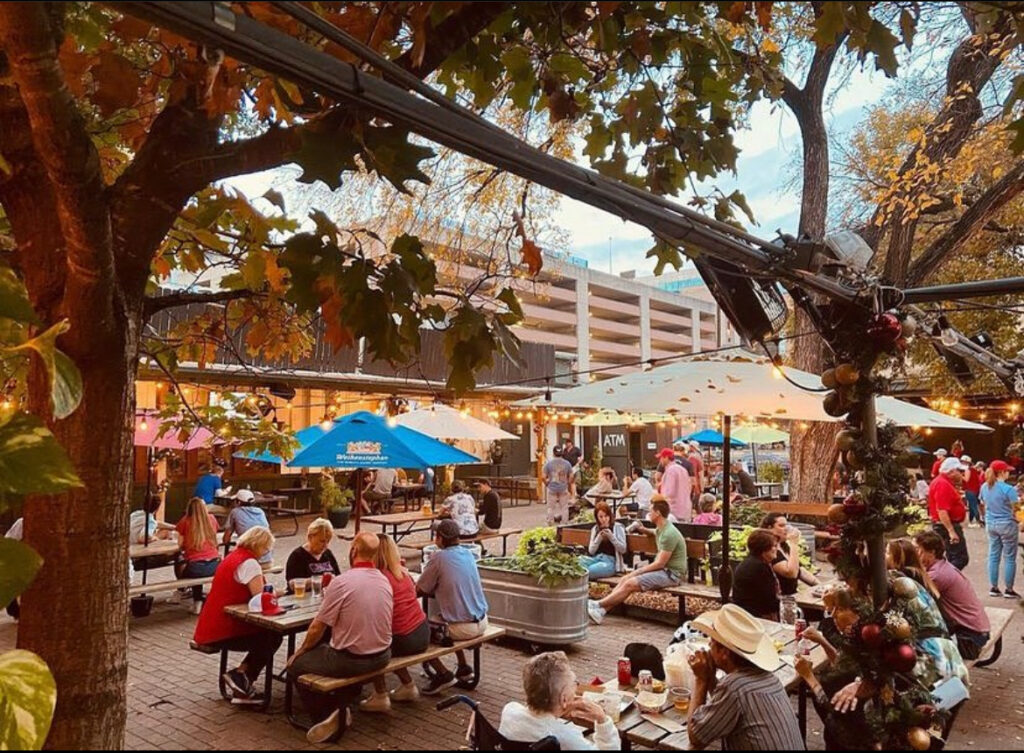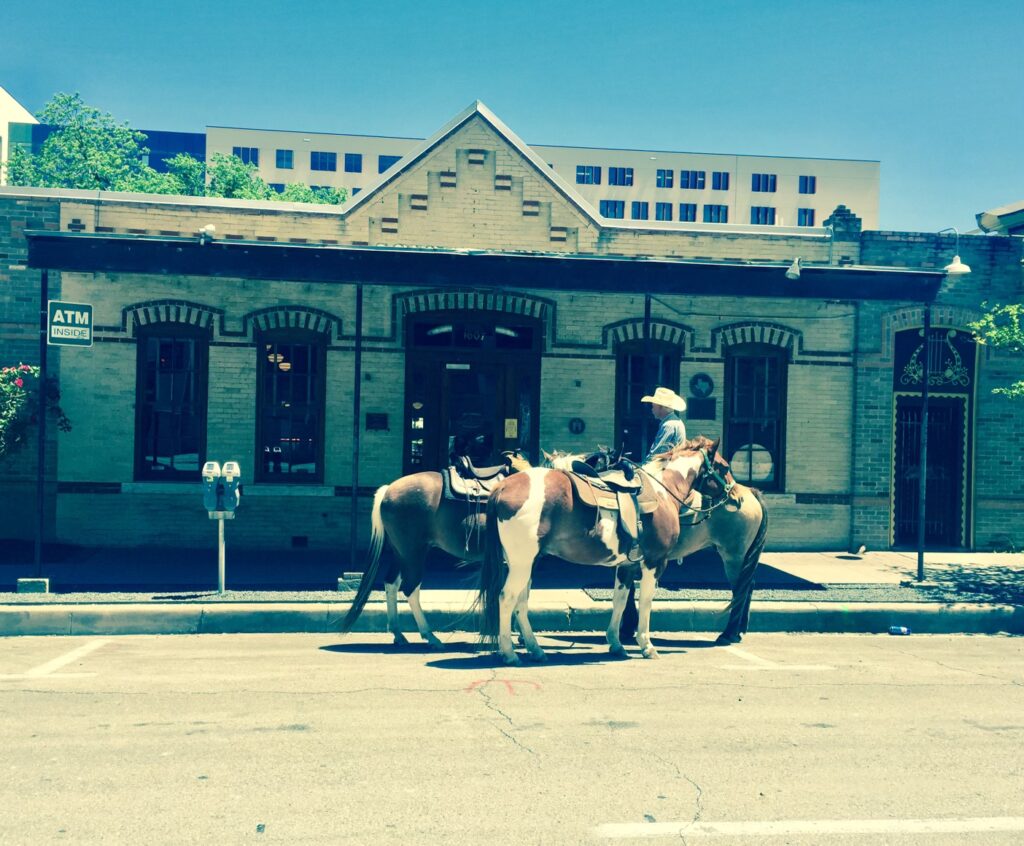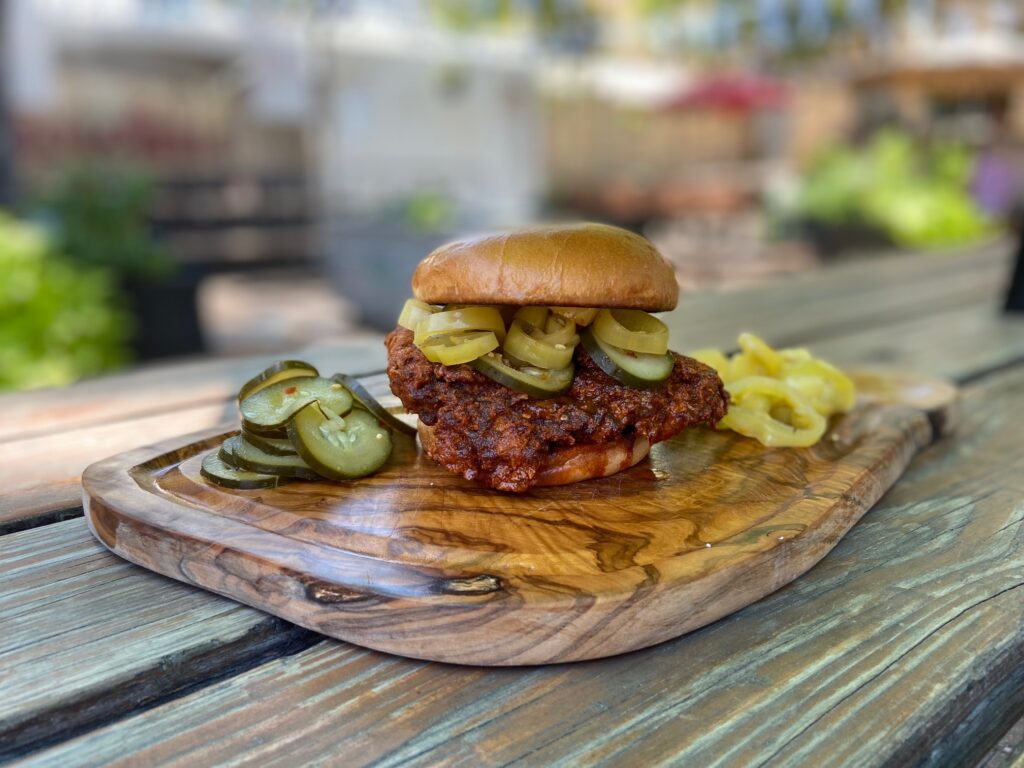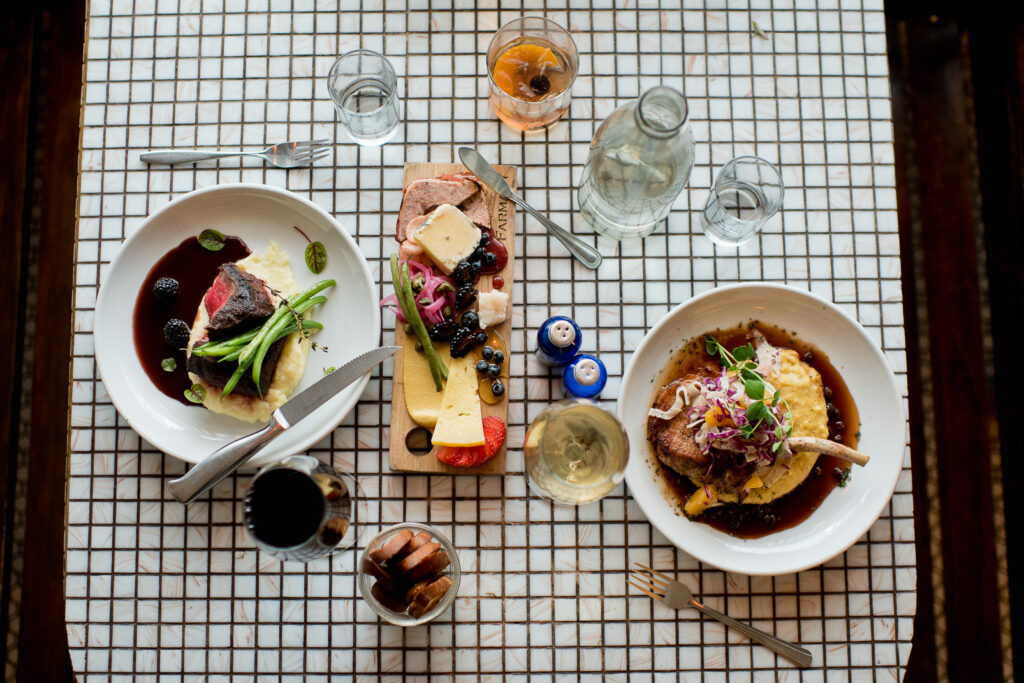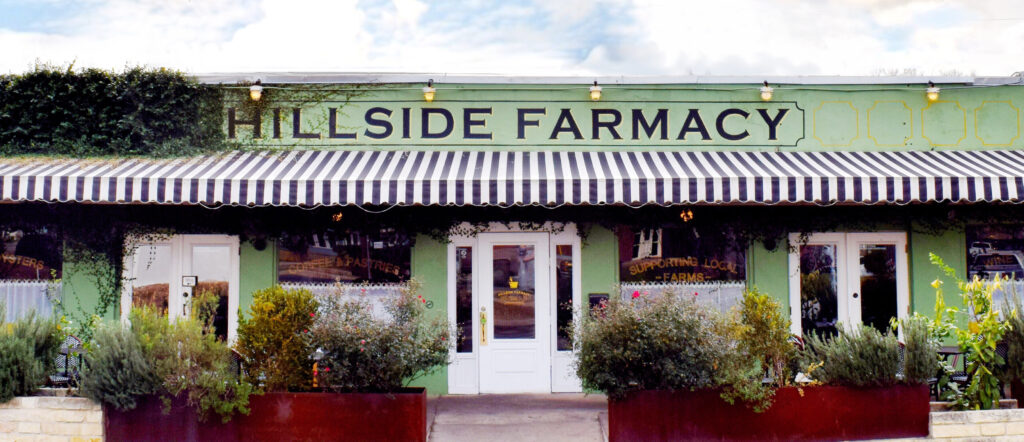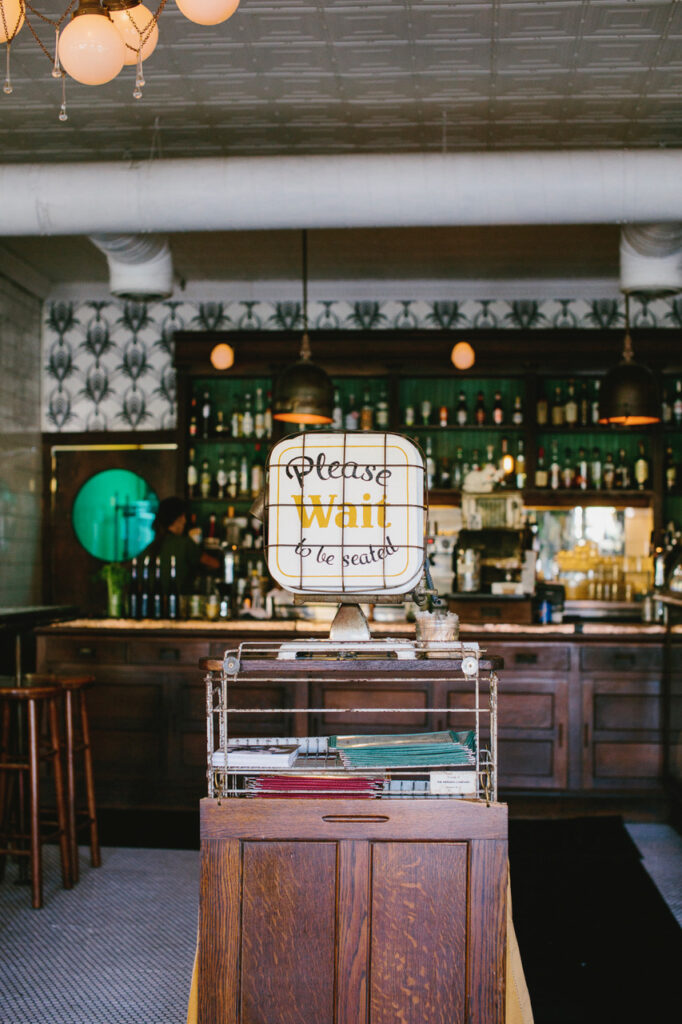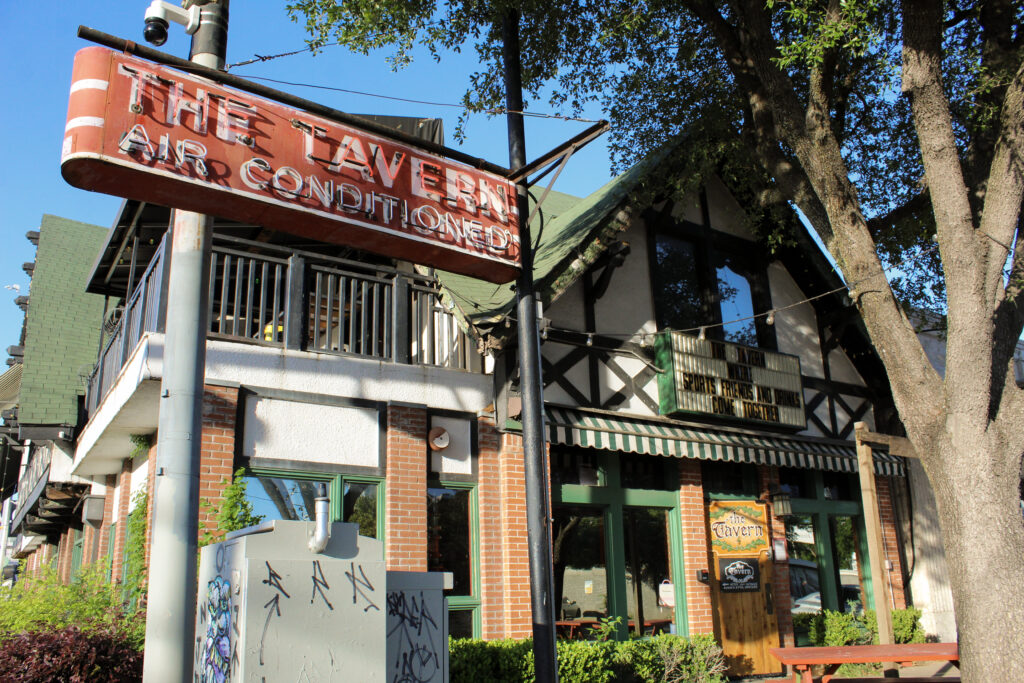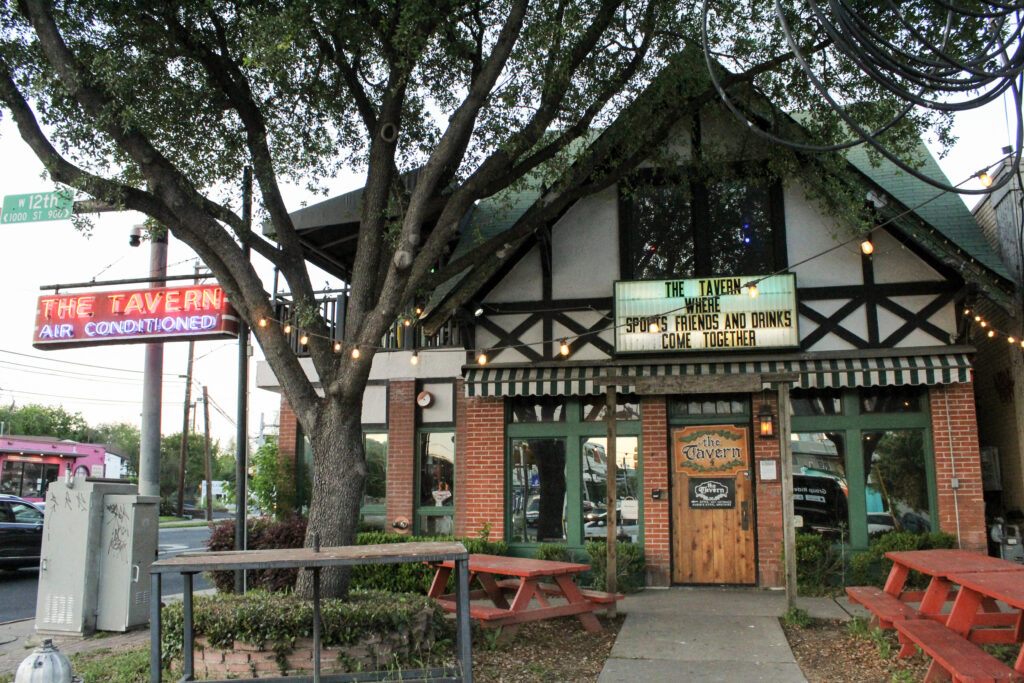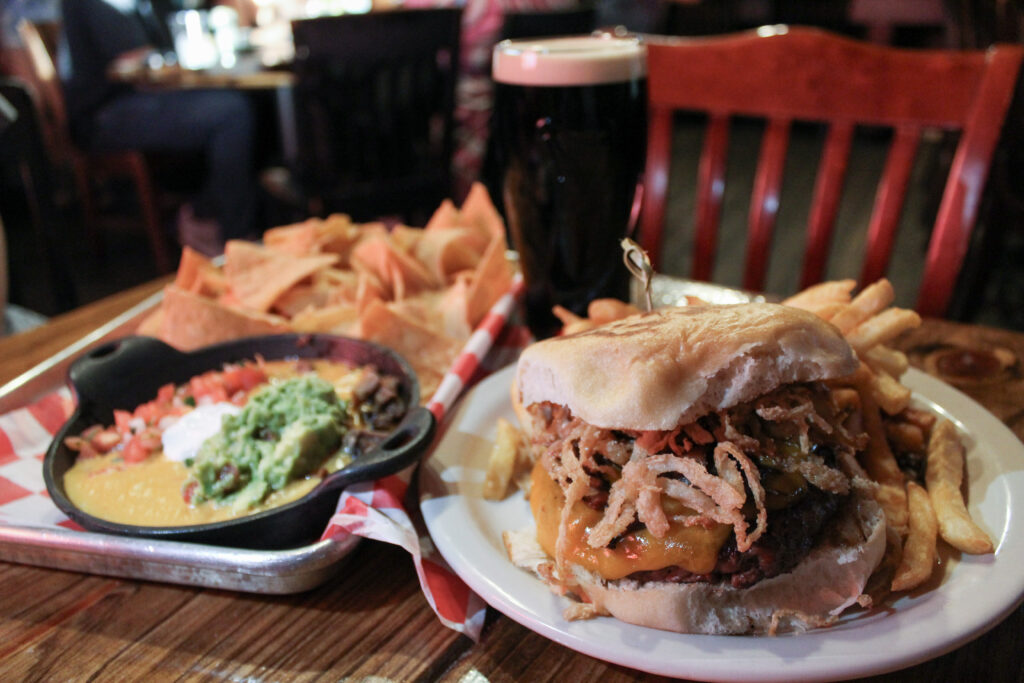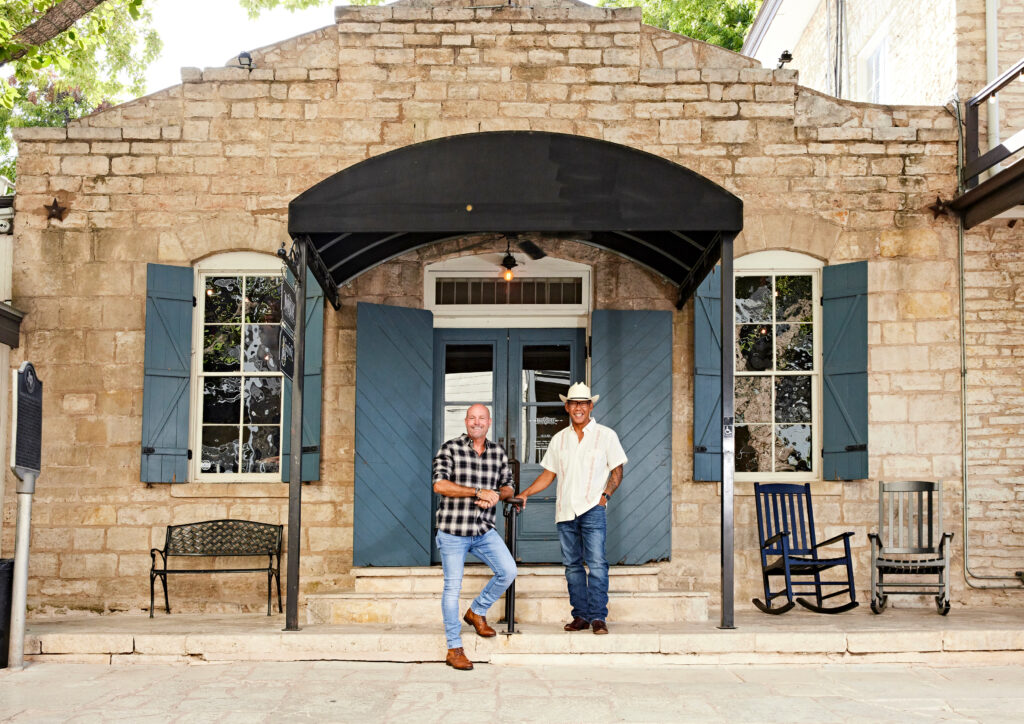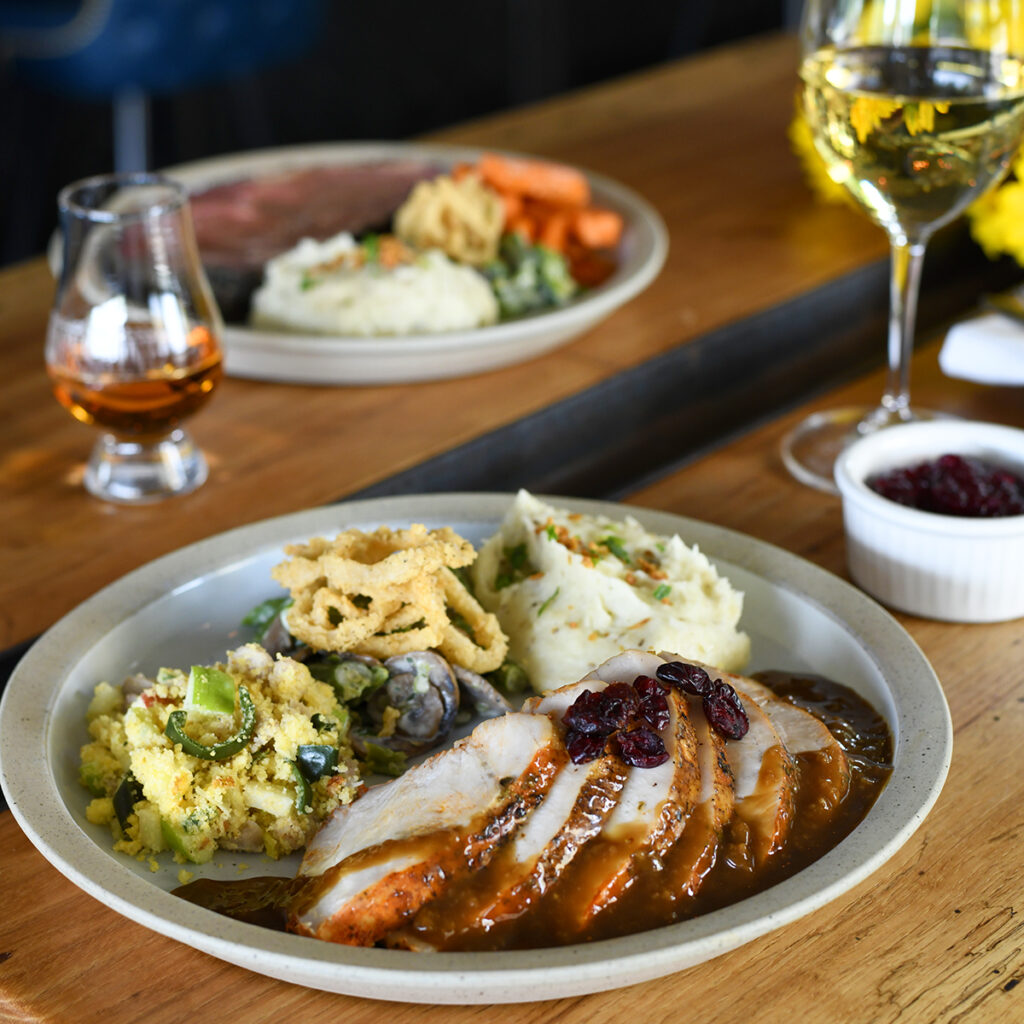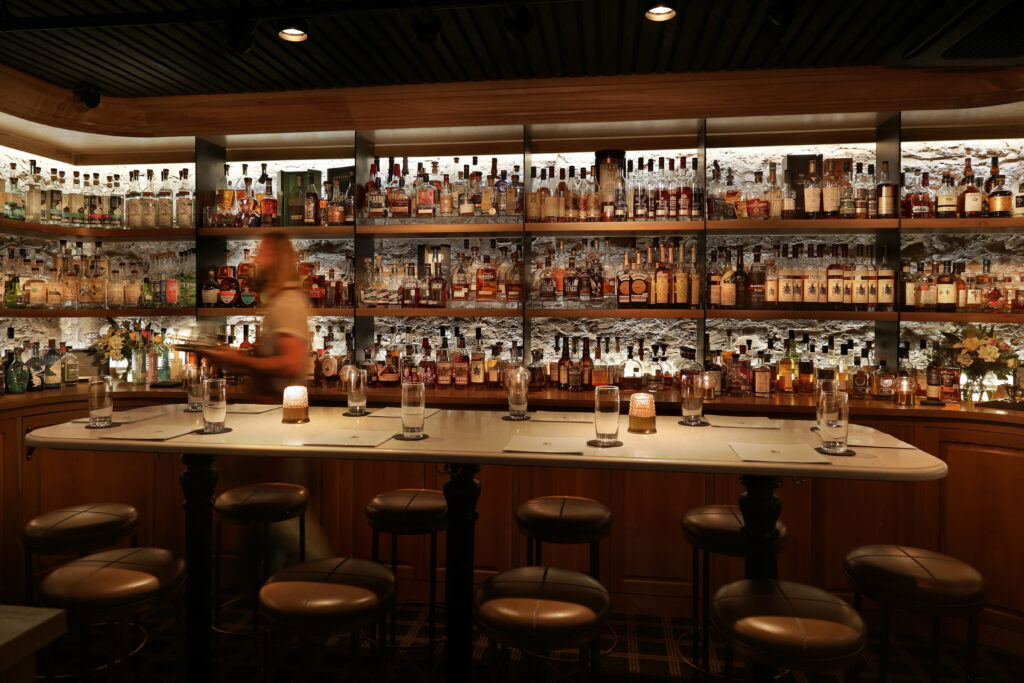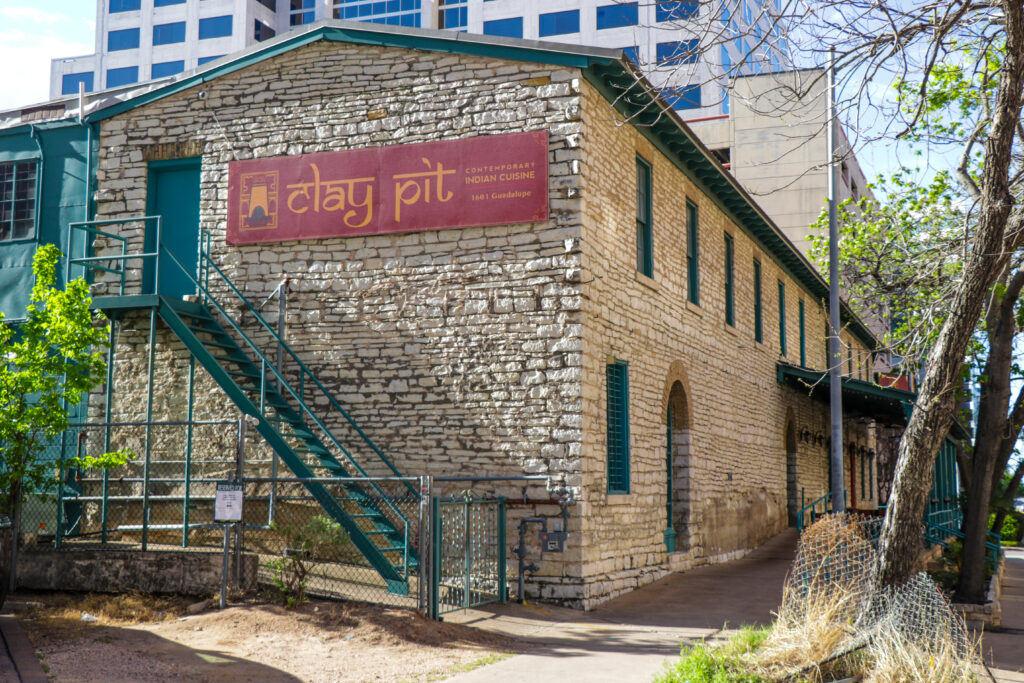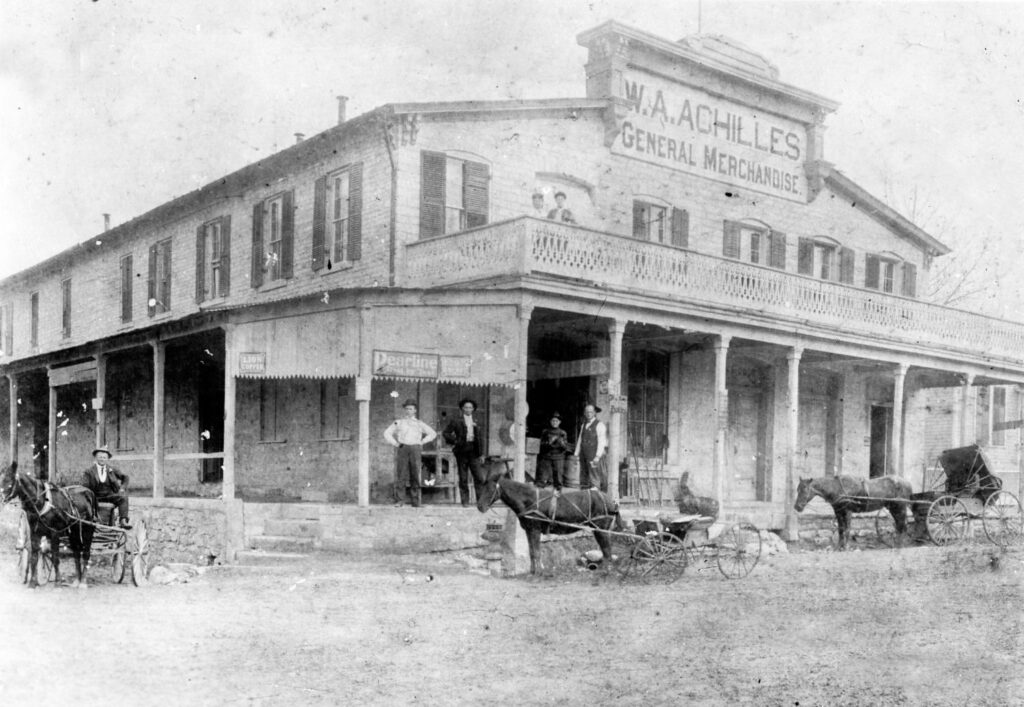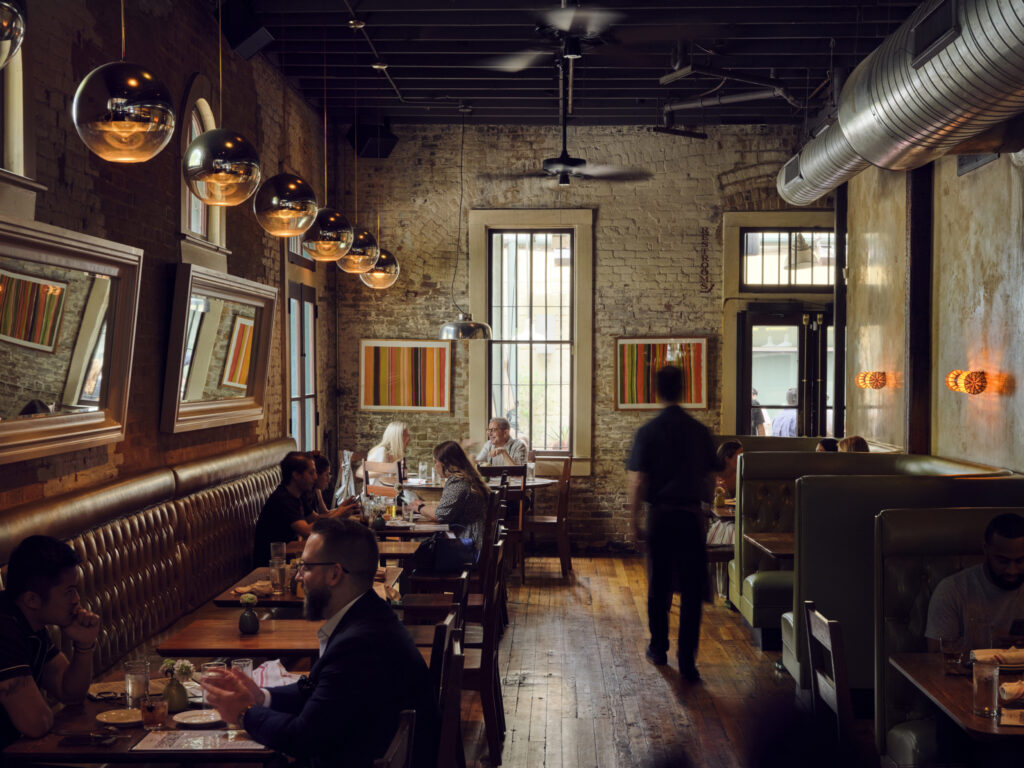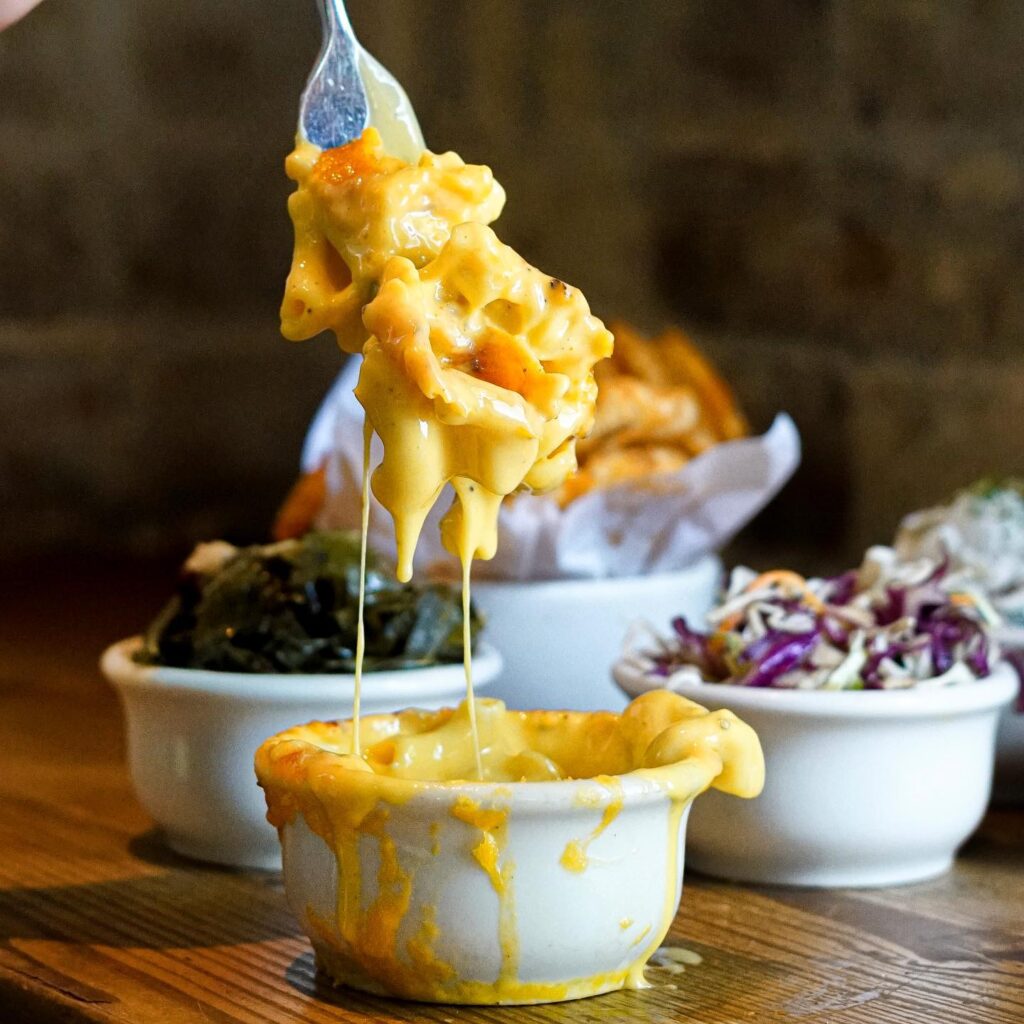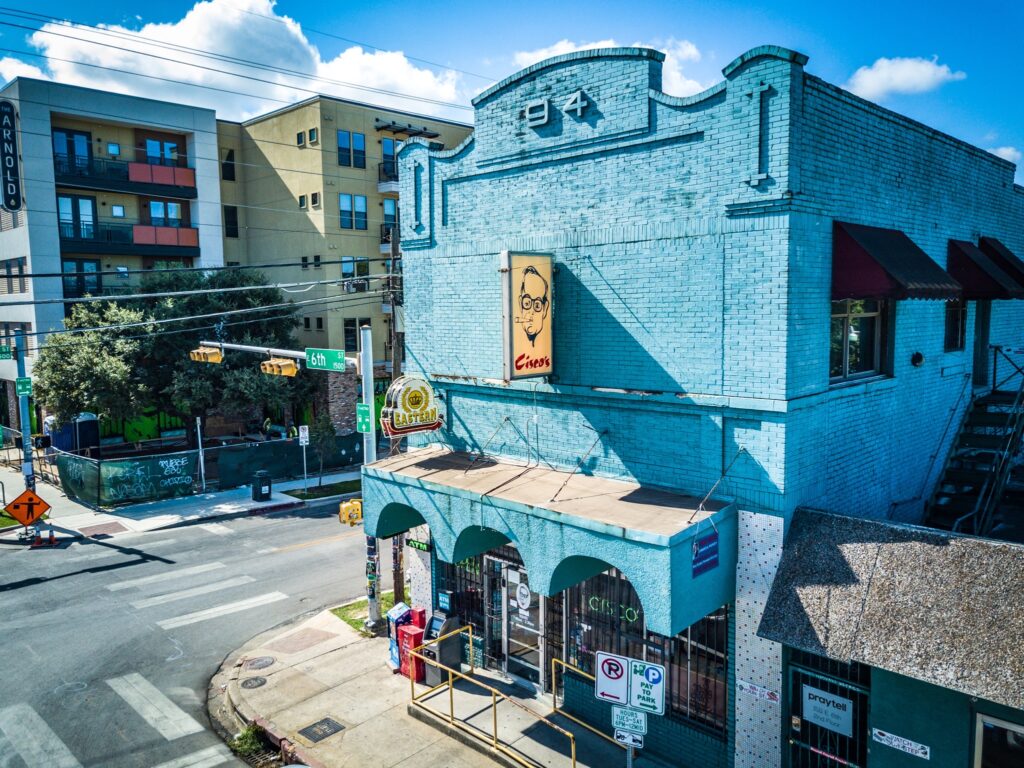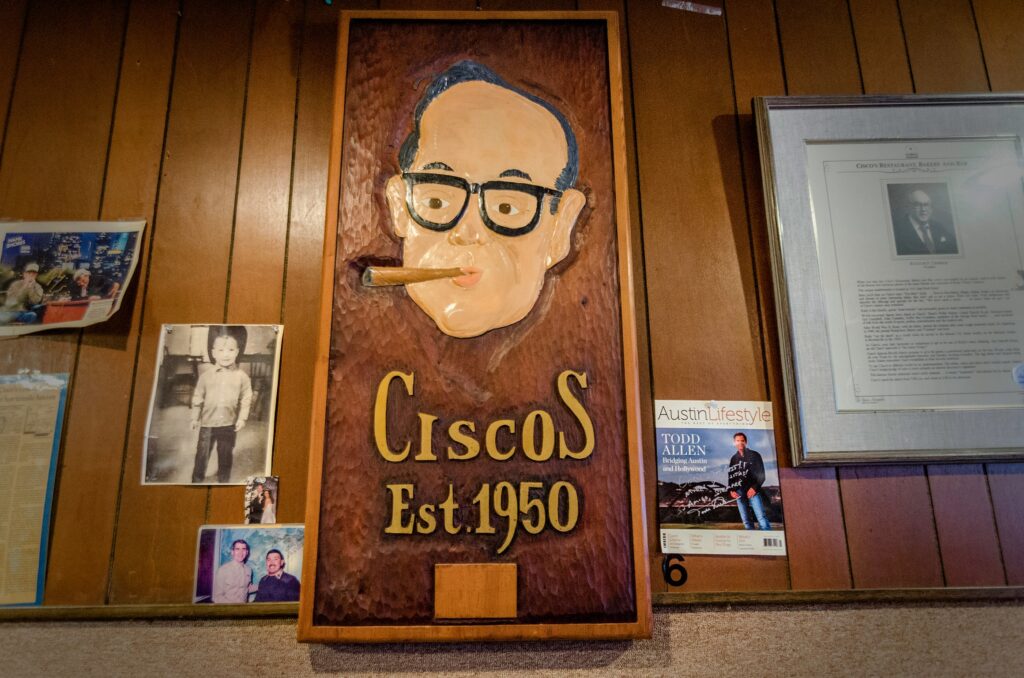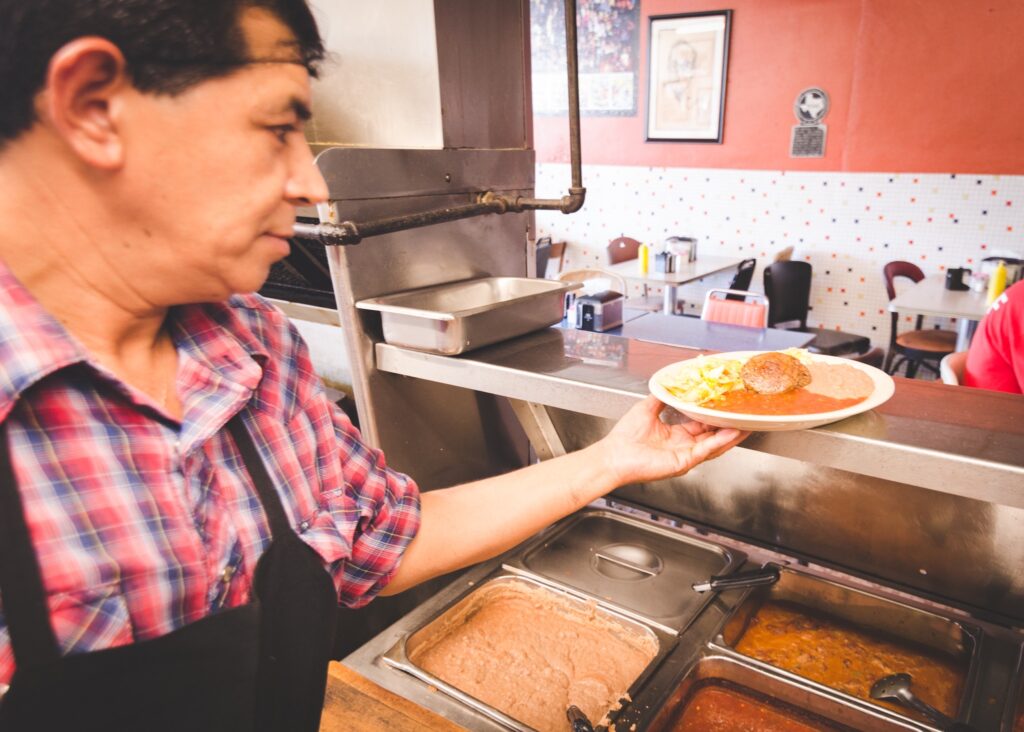Dine Among History in Austin’s Historic Restaurants
Step inside these 12 Austin restaurants located in landmark buildings

If you’re a history buff or a diner who likes the idea of enjoying a wonderful meal in a setting rich with history, enjoy a visit to one of these beloved Austin eateries housed in buildings that have been around for generations.
Mattie’s
The South Austin oasis known as Mattie’s leaves a deep footprint in Austin’s hospitality scene. The restaurant can be found inside an 1890s farmhouse that was purchased in 1916 by Henry Faulk and his wife Martha, also known as “Mattie.” The Faulks turned their South Austin property into a mini-farm, growing fresh vegetables in their gardens and raising chickens, cows, and other livestock. In 1946, Henry and Mattie’s daughter Mary turned the farmhouse into a restaurant called Green Pastures, where she could use the produce grown on-site to create dishes inspired by Southern and global cuisines. Green Pastures served Austinites until 2016 when it became Mattie’s. Now, Mattie’s is widely regarded as one of Austin’s best places for weekend brunch, with its famous milk punch, locally-grown produce, a beautiful setting with antique architecture, roving peacocks (yes, there are plenty at Green Pastures), and hearty, flavorful fare.
Lutie’s at the Commodore Perry Estate
In 1928, an affluent real estate developer known as Edgar Howard “Commodore” Perry noticed a plot of empty land near the Hancock Golf Course and decided to turn it into a beautiful European-style estate with lush gardens and a Gatsby-like manor house. Perry and his wife Lutie threw countless parties at their elaborate home, but after they sold off the property in the 1940s, it spent the next several decades being used as schools and educational centers. In 2012, an elaborate restoration project began, and the property reopened in 2020 as Commodore Perry Estate, a luxury hotel with a widely celebrated restaurant, Lutie’s, a visually stunning New American destination with an expert blend of original design features and luxe upgrades, a robust menu featuring locally-grown and raised Texas ingredients, and exquisite views of the gardens.
The Driskill Grill
It’s tough to think of a better example of a historic Austin restaurant than the Driskill Grill. The Driskill Hotel opened in downtown Austin in 1886, making it the oldest hotel in the city. The hotel’s Romanesque Revival style with plenty of Texan twists — think columns, arches, and intricate molding, but with plenty of mounted bull horns and Lone Star accents everywhere — has turned it into a fascination for generations of architecture buffs, and the hotel restaurant is fully immersed in that aesthetic as well. The Driskill Grill is famous for hosting President Lyndon B. Johnson’s first date with his wife Lady Bird in 1934, and it continues to be a top spot for romantic outings thanks to its grand vintage vibes and its menu of classics that feel fresh and modern.
Scholz Garten
Scholz Garten, a beloved German biergarten and dining hall in downtown Austin, is a prime representation of the wave of German immigrants who came to central Texas in the 19th century. August Scholz, a Civil War veteran originally from Germany, opened this spot in 1866 on a property that used to be a boarding house, and it quickly became a major center for the German community in Austin. Scholz Garten continues to serve steins of German beer, brats and pretzels and schnitzel, and a welcoming energy that explains why it’s the oldest continuously-operating restaurant in Texas.
Hillside Farmacy
As its name suggests, Hillside Farmacy — a farm-to-table restaurant in East Austin that specializes in local ingredients — inhabits a space that once served as a neighborhood drugstore. The beautiful building dates back to the 1920s, when Dr. Ulysses S. Young, who was one of only a handful of Black pharmacists working in Austin at the time, purchased the property and operated Hillside Drugstore. The drugstore remained in business until the 1970s, and subsequent tenants included a barber shop, a bookstore, and a sandwich shop. The Hillside Farmacy team transformed the space into a restaurant in 2011, and the building, which is still owned by the Young family, became an official Historical Landmark in 2019.
The Tavern
A popular old-school pub, The Tavern has been serving frosty brews to locals since 1933… although rumor has it that they had a bit of a head start by operating as a secret bar during the Prohibition Era. The building first came to life as a grocery store in 1916, but the architect took design inspiration from alehouses he came across in Germany, so The Tavern was destined to become a neighborhood watering hole. The Tavern’s long tenure on West 12th Street has also led to its unofficial designation as Austin’s most haunted bar. Drop in for a beer sometime and ask the bartender to tell you about “Emily,” and you’ll get a very entertaining ghost story.
Moonshine Grill
No conversation about historic restaurants in Austin would be complete without Moonshine Grill, which is found in a building so vintage that it predates the city of Austin itself. The structures at 303 Red River Street were originally built as a dry goods store, a carriage house, a “Sunday House,” where rural travelers could stay when in town for church services, and a saloon by the founder of the Waterloo Compound — a community that evolved into what we now know as Austin — and his daughter and son-in-law. The complex was home to many different businesses over the years, and when Moonshine took over in 2003, they were determined to maintain as much historic integrity as possible. The restaurant’s antique charm is a perfect match for its satisfying southern cuisine and amiable hospitality.
Clay Pit
A popular modern Indian restaurant just north of the Capitol, Clay Pit is located inside the Bertram Building, a structure originally built by German immigrant Rudolph Bertram in 1866 as a trading post. This building is chock-full of secrets and ghost stories, in part due to the fact that Bertram built an intricate network of tunnels underneath that led to brothels. Clay Pit is one of several restaurants that have occupied the building, and it remains a major draw for fans of bold Indian cuisine, as well as fans of the supernatural.
Lambert’s
Lamberts, the polished downtown BBQ joint, occupies the J.P. Schneider Store, which was built on West 2nd Street in 1877 by Jacob Schneider, a German immigrant who made Confederate ammunition during the Civil War before becoming an errand boy for the Union Army. Schneider’s business on West 2nd was a popular dry goods store that operated consistently until 1933. After that, a wide array of shops, galleries, and other ventures inhabited the space, and Lamberts opened there in 2006.
Cisco’s
A Tex-Mex standard that’s been feeding East Austin for over 60 years, Cisco’s received landmark designation in 2019. Part of the argument in favor of Cisco’s landmark status involves its prominence in Texas politics — the landmark application pointed out the fact that Cisco’s was a favorite meeting spot for former Austin mayors, Texas governors, and even President Lyndon B. Johnson.

Dirty Martin’s Place
UT students past and present join longtime Austinites in their love for Dirty Martin’s Place, an old-school burger joint that has occupied the same building on The Drag since 1926. When it originally opened as Martin’s KumBak, this restaurant was so bare-bones that it featured only eight bar stools for seating and actual dirt floors. When the concrete foundation that still stands today was poured during the 1950s, regulars started referring to Martin’s KumBak as “Dirty’s” as a loving nod to those humble beginnings, and the nickname stuck so fiercely that the owners officially changed the name to “Dirty Martin’s Place.” Dirty Martin’s recently thwarted a potential shutdown and relocation when Project Connect, the light-rail system helmed by CapMetro that was initially supposed to cut through the property, opted to change its proposed route and keep Dirty’s safe on Guadalupe Street.

